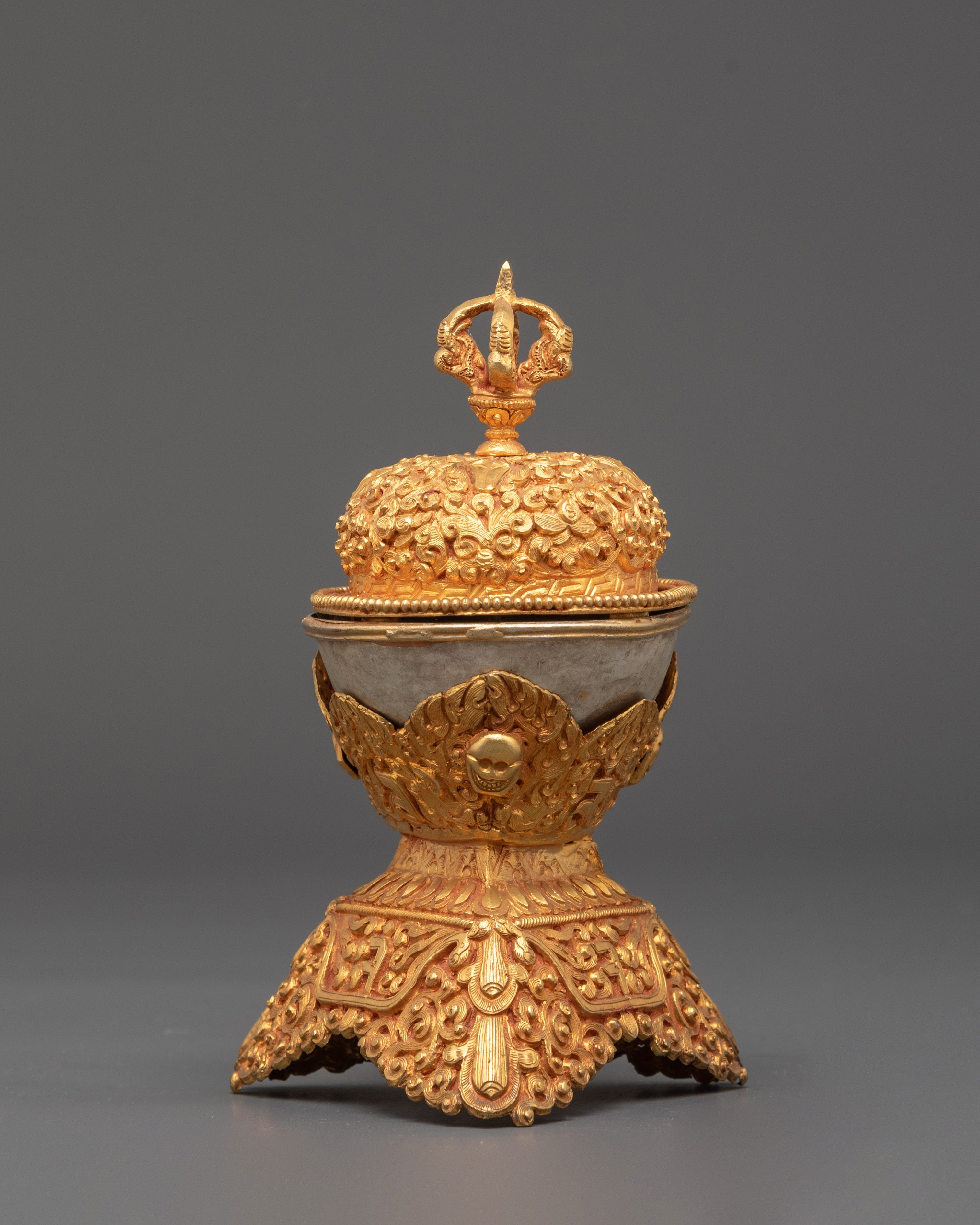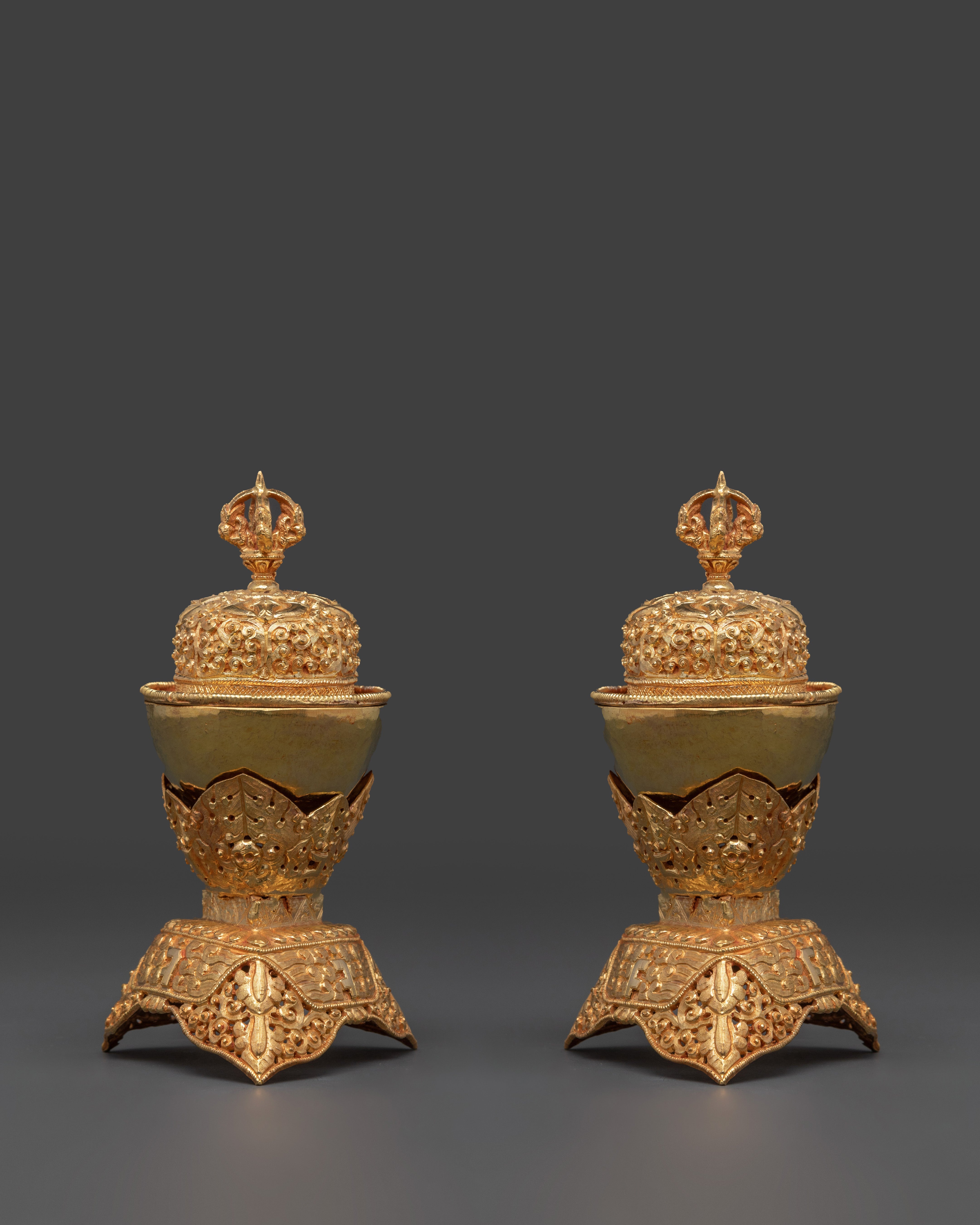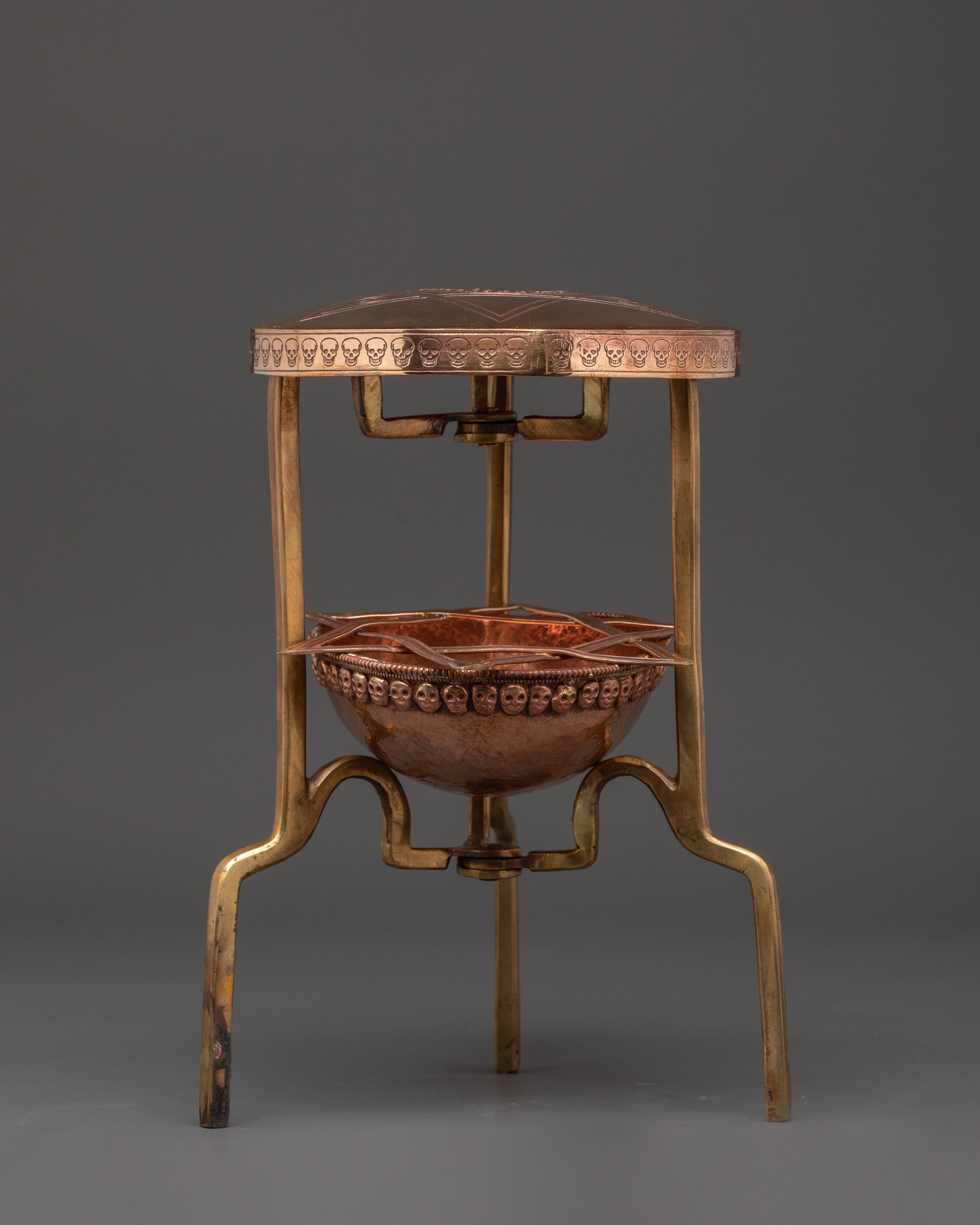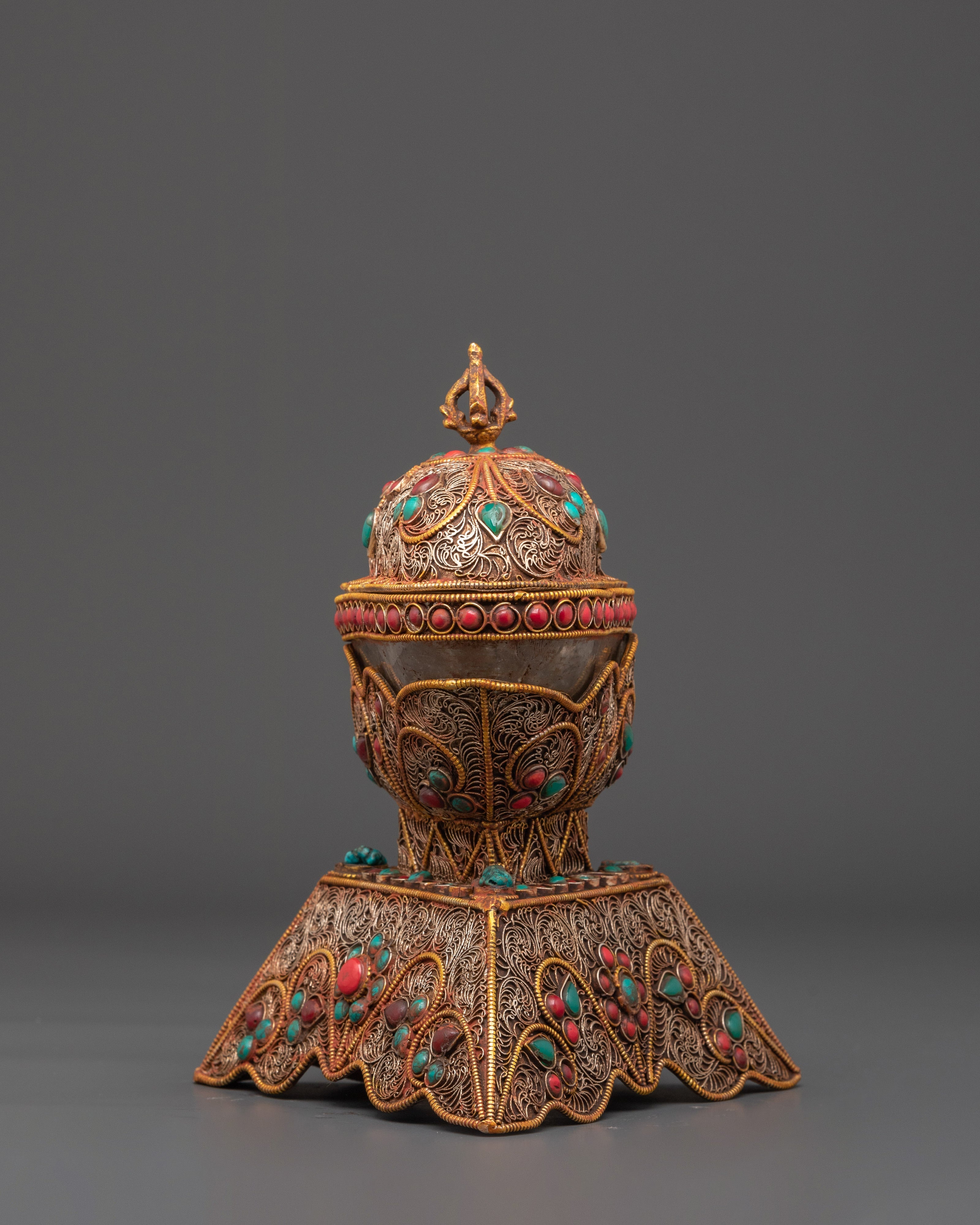Kapala Set
150 products
Showing 1 - 24 of 150 products
Kapala Set: Ritual Skull Cups in Vajrayana Buddhism
A "kapala set" is a group of ceremonial items utilized in many spiritual and religious traditions, especially in Hinduism and Tibetan Buddhism. "kapala" refers primarily to the set's centerpiece, a skull cup. An outline of a kapala set's elements and importance is provided below:
Components of a Kapala Set:
The kapala, also known as the skull cup, is a cup that is either intricately constructed from metal or other materials to resemble a human skull or is formed entirely of human skulls. Using a skull as a symbol represents both ego transcendence and impermanence. It is a potent reminder of life's fleeting nature and the necessity of letting go of attachment.
- Phurba (Ritual Dagger): The phurba has a handle shaped like a thunderbolt and is three-sided. It stands for the defeat of adversity and hindrances. In various purification and protection rituals, purbas are utilized to clear the way and preserve spiritual balance.
- The damaru, or hand drum, is a little instrument shaped like an hourglass. It is connected to Tibetan Buddhism's tantric teachings and represents the sound of nothingness. It is performed during ceremonies to call upon deities and establish a meditative mood.
- Drilbu (Ritual Bell): Usually constructed of metal, the drilbu is a little handbell. During rituals, it is combined with the damaru to produce a mellow, spiritually charged sound. Positive energies are said to be promoted, and the bell dispels destructive energies.
Significance and Use:
A kapala set is often used in specific tantric rituals and practices, especially in Vajrayana Buddhism. The set is associated with wrathful deities and protective rituals. Here are some aspects of its significance and use:
- Transformation of Ego: The kapala represents the realization of life's impermanence and the transformation of ego, and it is fashioned from a human skull or a vessel resembling a skull. It acts as a gentle reminder to let go of attachment and ego.
- Negative Forces Subjugation: The three-sided phurba represents the metaphorical pinning down or subjugation of negative forces, impediments, and detrimental influences. It is frequently used in rituals as a shield against evil energy.
- Calling on the Gods: Musical instruments known as the damaru and drilbu are essential for calling upon and interacting with deities. During ceremonies, the sound of these instruments is said to create a charged, sacred environment.
- Protection and Purification: Kapala sets are employed in several ceremonies for protection and purification. Consecrated water or other offerings are among the materials put inside the kapala, and their purpose is to sanctify and cleanse both the participants and the surrounding area.
- Tantric Practices: Kapala sets are closely related to tantric practices, which use ritual objects and symbolic activities to help the practitioner achieve spiritual realization and transformation.
To sum up, a kapala set is a group of ceremonial items having a profound symbolic meaning that is mainly utilized in tantric and Vajrayana Buddhism. Every element in the collection has a distinct function in protecting, purifying, and transforming the practitioner's spiritual path. It is a striking illustration of the elaborate and rich rituals present in these cultures.
























